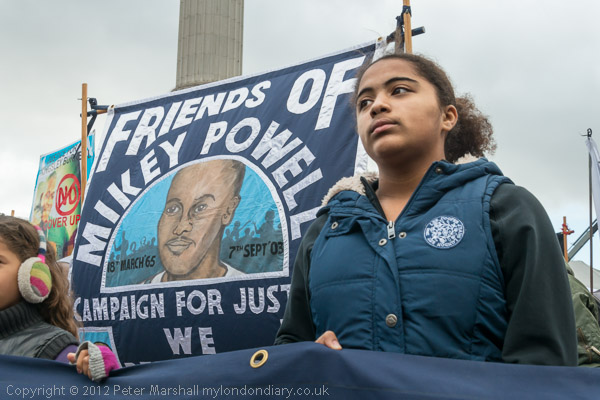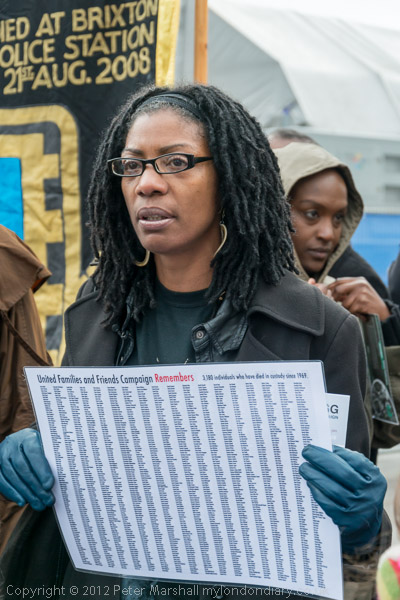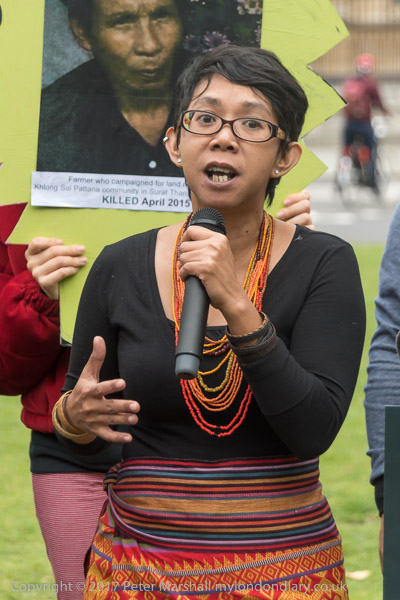
In 2009 the 31st October was also a Saturday, and a busy day for me in London, though today I’ll be staying home and only going to the UFFC annual memorial on-line event which starts at 1pm. In 2009, the UFFC had also decided not to march, but groups from some of the families of those killed by police had come with their banners to protest opposite Downing St.


Earlier I’d photographed a mass protest ride by motorcyclists, angry at Westminster Council’s imposition just over a year earlier of parking charges for motorbikes as an ‘experimental measure’ which has become permanent as a good money-earner for the council. It did seem ridiculous that bikers were being charged more for an annual permit than owners of small cars when 8 motorbikes can be parked in one car space. Although still contributing to pollution in the city, motorbikes take up considerably less road space too, their use reducting congestion which is a major factor in producing the lethal levels of air pollution that result in almost 10,000 premature deaths in London as a whole.

I’d gone on the photograph two groups protesting against the planned ‘March for Sharia’ by Anjem Choudary’s Islam4UK (a 2009 rebrand and relaunch of the radical Islamic group Al Muhajiroun, disbanded in 2004 to avoid proscription). Choudary, widely believed to have been cultivated by the UK security forces, probably never actually intended the group to march but announced as a provocation, always intended as a ‘no show’. He issued a statement around the time it was due to begin that the organisers had cancelled the march because of security concerns.
The two groups had gathered around the statue of Eros at Piccadilly Circus, although the information I’d heard from Islam4UK was that they would march from Parliament Square to Trafalgar Square via Downing St, around 600 yards away from the counter-protesters. There was certainly a lot of misinformation around before the event, and both Muslims4UK and The Islamic Society of Britain had called off plans for a counter-demo, possibly anticipating there was not to be a march. The larger group of protesters were supporters of British Muslims for Secular Democracy.

Also present were a number supporters of extreme right anti-Islamic groups including the English Democrats, March For England and a few from the EDL. Later I found that more of the EDL were wandering around the Parliament Square area where the March4Shariah had been planned to start.

As I walked down from Piccadilly Circus towards Downing St and went through Trafalgar Square I met several angels, and accepted the offer of a hug, something we are currently rather short of, from one of the Angels of Love, Compassion, Wisdom, Patience, Courage, Happines or Harmony who gave me a picture of an angel on the reverse of which was written “I purify my mind by affirming my worth and honouring my choices for love.” I thanked her but refused the offer of a rose as I needed my hands for my cameras.
After talking with the ‘United Friends and Families‘ of those who have died in suspicious circumstances in police custody, prison and ‘secure’ mental health facilities who were protesting at Downing St, I continued down to Parliament Square, where I met with other photographers and journalists who had been waiting for the March4Shariah to begin. None of those from Islam4UK had turned up and I went home.
United Families and Friends
Be With an Angel
Moderates gainst March4Sharia
Right Wing against March4Sharia
Protest Ride at Bike Parking Charge
All photographs on this and my other sites, unless otherwise stated, are taken by and copyright of Peter Marshall, and are available for reproduction or can be bought as prints.



























































